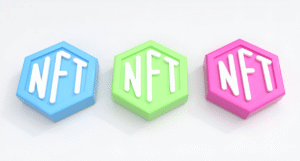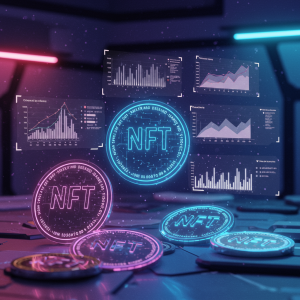Tokenized Conservation: Creating Real Environmental Change Through Digital Innovation

The intersection of blockchain technology and environmental conservation is creating remarkable new opportunities for protecting our planet. Tokenized conservation efforts have emerged as powerful tools that bring transparency, accountability, and efficiency to environmental protection initiatives worldwide.
What Are Tokenized Conservation Efforts?
Tokenized conservation represents a fundamental shift in how we fund and track environmental projects. By leveraging blockchain technology, conservation initiatives can create digital tokens that represent specific environmental assets or actions. These tokens establish clear ownership, verification, and traceability that traditional conservation methods often lack.
Unlike conventional environmental funding models, tokenized projects create direct links between investors, conservationists, and the actual outcomes in nature. This connection transforms abstract environmental goals into concrete, measurable results that everyone can see and verify.
Real-World Impact Through Digital Tokens
The power of tokenized conservation lies in its ability to convert digital investments into tangible environmental outcomes. When someone purchases a conservation token, they’re not just making a donation—they’re securing verifiable proof that specific conservation actions occurred.
For example, the Rainforest Foundation has pioneered token-based systems that allow supporters to fund specific acres of rainforest protection. Token holders can track exactly where their contribution is making a difference, with satellite imagery confirming the ongoing protection of their designated areas.
This direct connection between digital tokens and physical conservation creates unprecedented accountability. At InboundMarketo, we’ve seen how this transparency dramatically increases donor confidence and willingness to participate in environmental initiatives.
Blockchain’s Role in Environmental Verification
The foundation of effective tokenized conservation is reliable verification. Blockchain technology provides the essential infrastructure by creating immutable records that cannot be altered or falsified.
When a conservation action occurs—whether it’s planting trees, protecting wildlife habitat, or reducing carbon emissions—these activities are verified by trusted parties and permanently recorded on the blockchain. The result is an environmental accounting system that everyone can trust.
This verification process addresses one of conservation’s biggest historical challenges: proving that promised environmental actions actually happened as claimed. Donors no longer need to simply trust that their contributions made a difference; they can see the evidence.
Democratizing Conservation Through Tokens
Traditional conservation funding has often been limited to large donors, government grants, or complex carbon market systems. Tokenized approaches are changing this dynamic by making environmental participation accessible to everyone.
Through fractional ownership models, even small contributors can participate meaningfully in conservation projects. Someone who could never afford to protect an entire forest can now own tokens representing specific trees or small parcels within that ecosystem.
This democratization creates new funding streams for conservation organizations while building broader public engagement with environmental causes. When more people have a stake in nature’s success, the collective impact grows exponentially.
From Carbon Credits to Complete Ecosystems
Carbon offset tokens represent the first wave of tokenized conservation, allowing businesses and individuals to compensate for their emissions by funding verified carbon reduction projects. But today’s tokens go far beyond carbon.
Modern conservation tokens can represent biodiversity protection, water purification services, or even the preservation of specific endangered species populations. Conservation International has developed tokens that represent the protection of critical habitats based on their biodiversity value rather than just carbon storage.
This holistic approach ensures that tokenized conservation addresses multiple environmental values simultaneously, avoiding the pitfalls of single-metric environmental markets.
Challenges in Tokenized Conservation
Despite its promise, tokenized conservation faces important challenges. Verification in remote areas remains difficult, requiring innovative combinations of satellite monitoring, local observers, and sensor networks to confirm that conservation actions match digital claims.
Regulatory frameworks are still evolving, creating uncertainty about how tokenized environmental assets will be treated legally across different jurisdictions. Additionally, the technical complexity of blockchain systems can create barriers to entry for traditional conservation organizations.
Building Community Around Environmental Tokens
The most successful tokenized conservation projects create more than just financial relationships—they build communities of supporters invested in environmental outcomes. These communities become powerful advocates for the protected ecosystems and often contribute knowledge and resources beyond their financial investment.
When token holders receive regular updates about “their” conservation projects, complete with images, stories, and data showing real impact, their connection to the cause deepens. Many become long-term supporters of environmental protection rather than one-time donors.
The Future of Tokenized Conservation
As technology evolves, tokenized conservation is likely to become increasingly sophisticated. Advanced monitoring systems using satellite imagery, environmental DNA testing, and IoT sensors will provide even more reliable verification of conservation outcomes.
Smart contracts—self-executing agreements on blockchain networks—will automate funding releases when specific conservation milestones are achieved, creating performance-based conservation that rewards actual results rather than good intentions.
Measuring Success Beyond Token Sales
The true measure of tokenized conservation isn’t the number of tokens sold, but the verifiable environmental improvements created. The most effective projects establish clear baseline conditions before intervention and track specific ecological indicators afterward, quantifying their real-world impact.
This data-driven approach transforms conservation from an act of faith into a verifiable investment in our planet’s future. When supporters can see exactly how many trees survived, how wildlife populations increased, or how water quality improved, their confidence in conservation efforts grows substantially.
Conservation That Connects Digital and Natural Worlds
Tokenized conservation represents a bridge between our increasingly digital lives and the natural world we depend on. By applying the transparency and efficiency of blockchain to environmental challenges, we create new pathways for protecting nature in the digital age.
The future of environmental protection will likely involve this powerful combination of digital innovation and ecological understanding, creating conservation systems that are transparent, inclusive, and demonstrably effective at preserving our planet’s precious natural resources.








